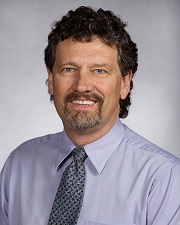
Fall 2017
Editor's Note

William J. Sieber, PhD
Readers of Outlook have more to enjoy than ever before! This is the inaugural issue in which readers’ questions are answered by SBM leaders and relevant Councils (e.g., ETCD). The quality of the articles and their value to ALL SBM members should be increasingly apparent. Specifically in this issue, the BIT SIG interview with Dr. Aschbacher is a good read for all SBMers curious about career transitions and differences between industry work and academics. The Health Decision Making SIG’s article is also broadly relevant to those not in the HDM SIG as it serves as a wonderful primer on that area of behavioral medicine. Also a good read for all is the description by the Multiple Health Behavior Change SIG of the basics for structuring the elements of a mentoring relationship for shared success. The OBBI SIG article is a great example of how research design (e.g., SMART) is more closely supporting analysis and improvement in clinical interventions – a focus on SBM overall. Mid-career professionals should find the ideas presented in the ETCD Council’s article to be supportive of the struggles often encountered in this career phase; the ideas often encourage us to focus on work-life balance with one positive outcome being a possibly more “productive” career. The description of the process of how the decision was made to switch publishers for our two flagship journals is an example of why Outlook is becoming more and more a major communication channel between SBM leadership and all members.
Questions posed recently by readers seeking ‘senior advice’: (thank you to Ed Fisher, David Conroy, and the ETCD Council for these responses)
- How can our “system" be changed and reinforced to better recognize collaboration and deep attention to mission over "competitive individualism”?
- Responses:
- There is no easy answer to how we change the culture, but asking the question in a public forum like this is a good way to start the conversation. A recent article by Dr. Madhu Mazumdar and colleagues has put forth three key components of valuing team science that need to be considered by institutional promotion committees, department chairs, and others who evaluate faculty.
- Contributions to team-based scholarship that go beyond the number of 1st author/senior author publications and grants need to be assessed and given appropriate and substantial weight, in addition to tracking specialized contributions to education and service
- Faculty evaluations must be founded upon well-articulated criteria for assessing the stature and accomplishments of team scientists, including letters from team science leaders that document the major contributions of the faculty member to published papers and grants. Mechanisms for collecting such evaluative data must be developed and implemented at the institutional level.
- Responses:
- How should newly tenured faculty get out of the ‘post-tenure slump’?
- Responses:
- In hindsight, I should have expected some sort of letdown after accomplishing a goal that organized many of my daily activities for the past 6 years…but I didn’t. What helped me most was finding interesting new goals. I stayed deeply involved in work that led up to tenure but I got excited by investigating some new research problems and trying different methods. I continue to get a thrill from riskier projects – they are interesting even when they don’t turn out as expected.
- Go through what are probably quite a few files of papers that are “in the works.” In one of them you probably have little remaining interest. Very likely, it also would have very little importance if published. Throw it away or delete it. Savor the moment of hitting “trash” or of dropping the hard copy file in the recycle bin. You are likely to find this mildly liberating. Now that you have tenure, you can focus on what you care about and what is important, not just building the pile.
- According to a recent publication by the Collaborative on Academic Careers in Higher Education, getting out of a post-tenure slump (also identified by others as a mid-career slump) requires faculty and their institution to work hand-in-hand to develop processes whereby faculty can “vision” methods to match their passions with institutional needs. One example provided in this paper was that a Dean at the University of Missouri-Kansas City conducted a series of visioning exercises with faculty to identify their passions and to develop career plans to engage those passions. Another example was to engage with other mid-career faculty at national meetings, in order to share best practices. In this issue of Outlook in the ETCD Corner, we have a Q&A with three panelists addressing ways to balance creativity and productivity demands in mid-career, and their perspectives may also be useful to consider.
- Responses:
-- William J.Sieber, PhD